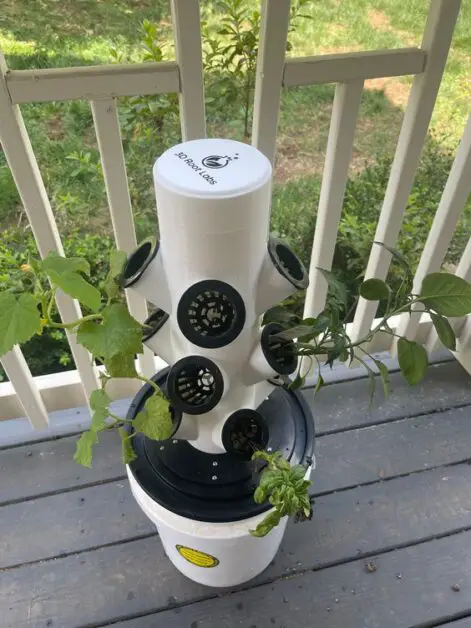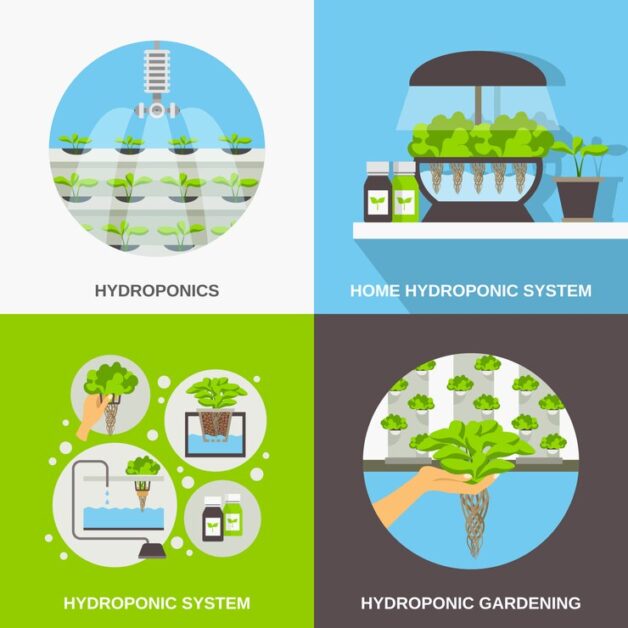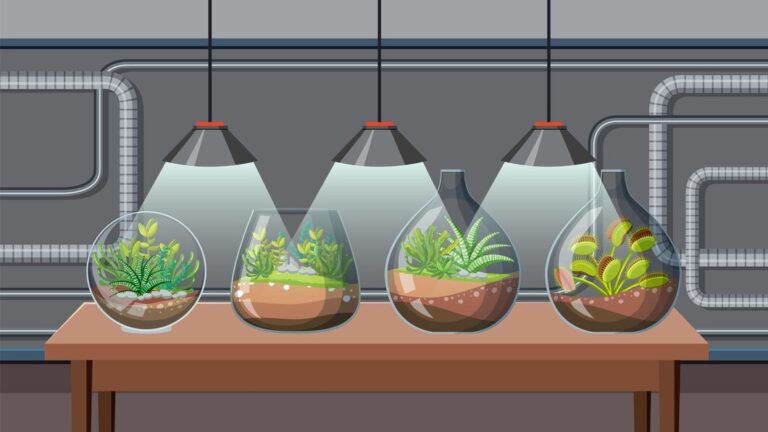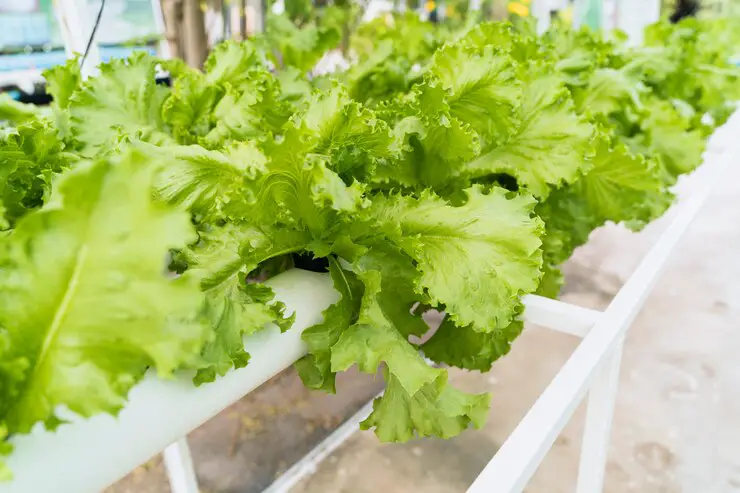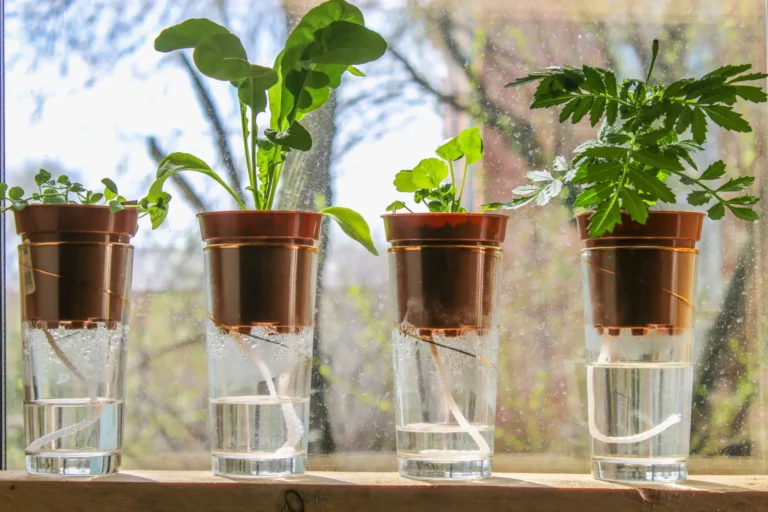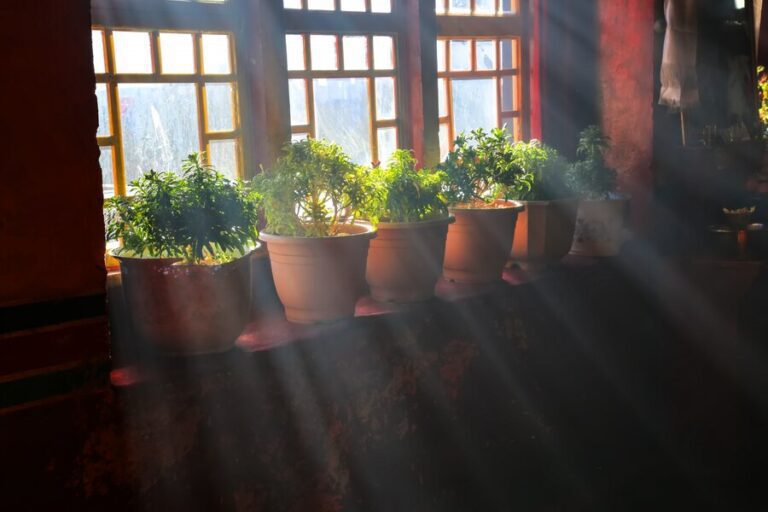Why You Should Use Net Pots for Hydroponics: Top Reasons and Benefits
Table of Contents
The Basics of Hydroponics and Net Pots
Hydroponics is a method of growing plants without soil, where the plant’s roots are submerged in water and nutrients are provided through a nutrient-rich solution. This innovative technique offers numerous advantages over traditional soil-based gardening, making it an increasingly popular choice for gardening enthusiasts.
One essential component of hydroponic systems is the net pot. These pots have a mesh or perforated design, allowing water and nutrients to easily reach the plant’s roots while also promoting excellent air circulation. By suspending the plant’s roots in the nutrient solution, net pots provide a highly efficient way for plants to absorb nutrients and water. This not only enhances nutrient uptake but also promotes healthier and faster plant growth.
With net pots, gardeners can enjoy greater control over their plants’ root oxygenation. Since the roots are exposed to air, oxygen is readily available, preventing root suffocation and promoting better overall plant health. Additionally, these pots facilitate proper drainage, allowing excess water to flow out, minimizing the risk of overwatering and the development of root rot.
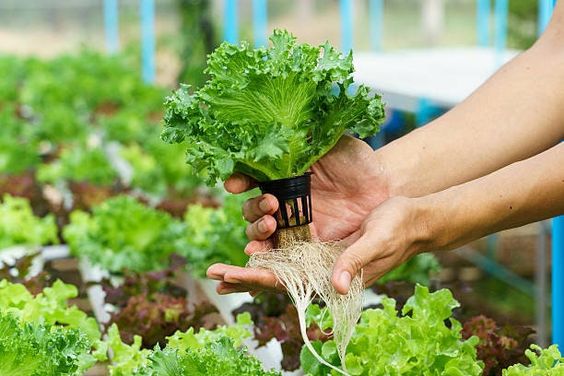
Net pots offer versatility in plant growth as well, allowing gardeners to cultivate a wide range of plant varieties, from leafy greens to flowering plants. They can be used in various hydroponic systems, including Deep Water Culture (DWC), Nutrient Film Technique (NFT), and Ebb and Flow systems. Moreover, net pots support easier transplantation of plants, ensuring minimal disturbance to the roots during the transfer process.
In conclusion, net pots play a crucial role in hydroponic gardening, providing the ideal environment for plant roots to thrive. By facilitating root oxygenation, enhancing nutrient absorption, and offering versatility in plant growth, these pots contribute to stronger and healthier plant development. Whether you are a novice gardener or a seasoned expert, incorporating net pots into your hydroponic system can greatly improve the success of your garden.
• Hydroponics is a method of growing plants without soil, using water and nutrient solutions
• Net pots are an essential component of hydroponic systems
• Net pots have a mesh or perforated design for easy access to water and nutrients
• They promote excellent air circulation around the plant’s roots
• Net pots enhance nutrient uptake and promote healthier and faster plant growth
• These pots provide greater control over root oxygenation, preventing suffocation and promoting better overall plant health
• Proper drainage in net pots minimizes the risk of overwatering and root rot
• Net pots support the cultivation of a wide range of plant varieties
• They can be used in various hydroponic systems such as DWC, NFT, and Ebb and Flow systems
• Net pots allow for easier transplantation with minimal disturbance to the roots
• Incorporating net pots into your hydroponic system can greatly improve gardening success.
The Importance of Choosing the Right Container
When it comes to hydroponics, choosing the right container for your plants is of utmost importance. The container you select can directly impact the overall health and growth of your plants, as well as the efficiency of your hydroponic system. The right container should provide a suitable environment for your plants to thrive, ensuring they receive the necessary support and nutrients they require.
One key factor to consider when choosing a container is its material. Different materials have varying effects on the root system, the growth of the plants, and the overall stability of the container. For example, plastic containers are popular for their lightweight nature and ease of cleaning, while clay pots provide better breathability for the roots. It is crucial to assess the specific needs of your plants and your hydroponic system to determine which material will work best for you.
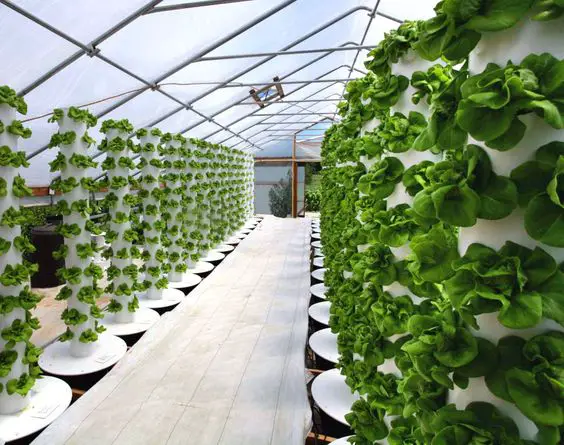
Another important consideration is the size and shape of the container. The size of the container should be appropriate for the specific plant species you are growing, allowing enough space for root expansion and growth. Moreover, the shape of the container should align with the desired placement within your hydroponic system. For instance, if you are utilizing vertical gardening techniques, tall and narrow containers may be more suitable to maximize space utilization.
Choosing the right container is a critical decision in hydroponics, as it can significantly impact the success of your gardening endeavors. By carefully considering the material, size, and shape of the container, you can create an optimal environment for your plants to thrive, leading to healthy and robust growth.
• The container you choose for your hydroponic plants directly affects their health and growth.
• Different materials have varying effects on the root system, plant growth, and container stability.
• Plastic containers are lightweight and easy to clean, while clay pots offer better breathability for roots.
• Assess the specific needs of your plants and hydroponic system to determine the best material for your container.
• Consider the size of the container to allow sufficient space for root expansion and growth.
• The shape of the container should align with your desired placement within your hydroponic system.
• Tall and narrow containers may be more suitable for vertical gardening techniques to maximize space utilization.
Net Pots: A Solution for Root Oxygenation
Net pots are a valuable solution when it comes to ensuring ample oxygenation for the roots of hydroponic plants. These pots are specifically designed to promote the exchange of gases between the nutrient solution and the root system, ultimately enhancing plant growth and overall health. The unique design of net pots allows for the continuous flow of oxygen to the roots, preventing issues such as suffocation or root rot that can arise from inadequate oxygen supply.
One of the key features of net pots that contribute to improved root oxygenation is their perforated design. These pots are typically made from durable materials such as plastic or mesh, with a multitude of small holes or slits that allow oxygen to easily access the root zone. This permeability ensures that the roots receive a sufficient supply of oxygen, promoting strong and healthy growth. By enabling the roots to access oxygen directly from the surrounding environment, net pots effectively eliminate the constraints associated with traditional soil-based gardening and offer an ideal solution for optimizing root oxygenation in hydroponic systems.
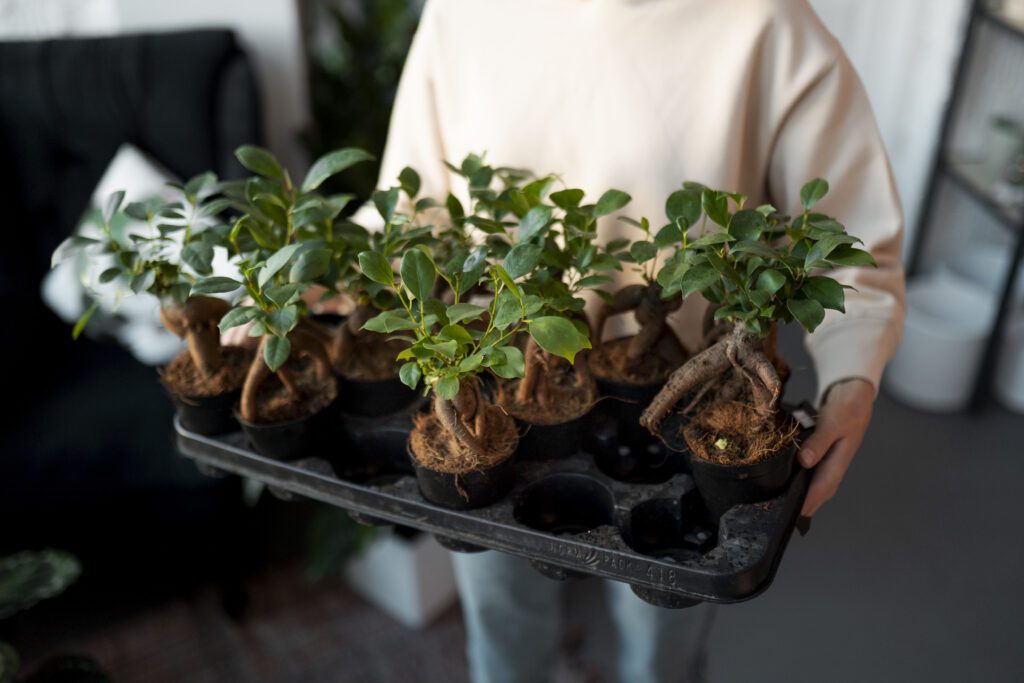
In addition to their perforated design, net pots also allow for maximum aeration due to their suspension in hydroponic systems. Unlike traditional pots that sit directly on the ground, net pots are suspended above the nutrient solution, providing unrestricted access to oxygen. This unique feature ensures that the roots are never submerged in water, reducing the risk of oxygen deprivation and creating an optimal environment for root development. Whether used in a deep water culture (DWC), nutrient film technique (NFT), or other hydroponic setups, net pots play a vital role in delivering the necessary oxygen for root respiration, resulting in healthier plants and higher yields.
• Net pots are specifically designed to promote the exchange of gases between the nutrient solution and the root system, enhancing plant growth and overall health.
• The perforated design of net pots allows for easy access of oxygen to the roots, preventing suffocation or root rot.
• Net pots are typically made from durable materials such as plastic or mesh with small holes or slits that ensure a sufficient supply of oxygen to the roots.
• By enabling direct access to oxygen from the surrounding environment, net pots eliminate constraints associated with traditional soil-based gardening.
• Net pots are suspended above the nutrient solution in hydroponic systems, providing maximum aeration and reducing the risk of oxygen deprivation.
• This unique feature creates an optimal environment for root development and promotes healthier plants with higher yields.
Promoting Proper Drainage with Net Pots
Net pots play a crucial role in promoting proper drainage in hydroponic systems. Their design allows excess water and nutrient solution to drain out of the pots, preventing waterlogging and ensuring optimal root health. This is particularly important in hydroponics, where the roots directly absorb nutrients from the water rather than relying on soil.
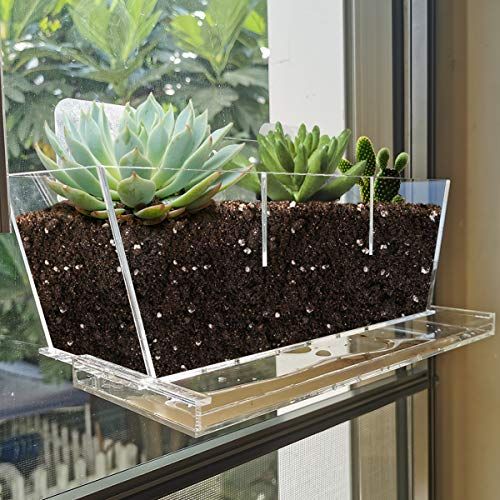
The drainage holes in net pots facilitate the efficient removal of excess water, preventing the accumulation of stagnant moisture that could lead to root rot or other water-related issues. By allowing water to freely flow through the pot, net pots help maintain the ideal moisture levels for plants, ensuring that the roots have access to the required amounts of oxygen. This promotes healthy root development, nutrient uptake, and overall plant growth.
• Net pots are specifically designed to promote proper drainage in hydroponic systems.
• Excess water and nutrient solution can easily drain out of net pots, preventing waterlogging.
• The roots in hydroponics directly absorb nutrients from the water, making proper drainage crucial for optimal root health.
• Drainage holes in net pots allow for efficient removal of excess water, preventing stagnant moisture and potential issues like root rot.
• By allowing water to freely flow through the pot, net pots help maintain ideal moisture levels for plants.
• Proper drainage promotes healthy root development, nutrient uptake, and overall plant growth.
Enhancing Nutrient Absorption with Net Pots
Net pots are a valuable tool in enhancing nutrient absorption for hydroponic plants. These specialized containers have an open design, allowing the roots to be exposed to the nutrient-rich solution. This direct exposure enables the plants to efficiently absorb the necessary nutrients they need for healthy growth.
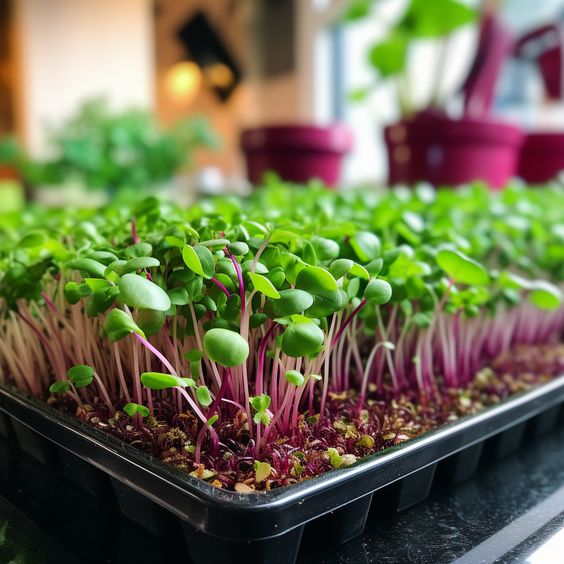
One of the key advantages of using net pots is the increased surface area available for root uptake. The open mesh design of the pot allows the roots to spread out and access a greater volume of the nutrient solution. As a result, the plants can uptake a larger quantity of nutrients, ensuring they receive the optimal amount for optimal growth. This enhanced nutrient absorption can lead to faster growth rates, increased yields, and overall healthier plants.
• Net pots have an open design that exposes the roots to a nutrient-rich solution
• This direct exposure allows plants to efficiently absorb necessary nutrients for healthy growth
• The open mesh design of net pots increases the surface area available for root uptake
• Roots can spread out and access a greater volume of the nutrient solution in net pots
• Enhanced nutrient absorption through net pots can lead to faster growth rates, increased yields, and healthier plants
Net Pots: A Sustainable and Eco-Friendly Option
Net pots are an excellent option for those looking to cultivate plants in a sustainable and eco-friendly manner. These pots, typically made from recycled materials such as plastic, are designed to provide optimal growing conditions for plants while minimizing environmental impact.
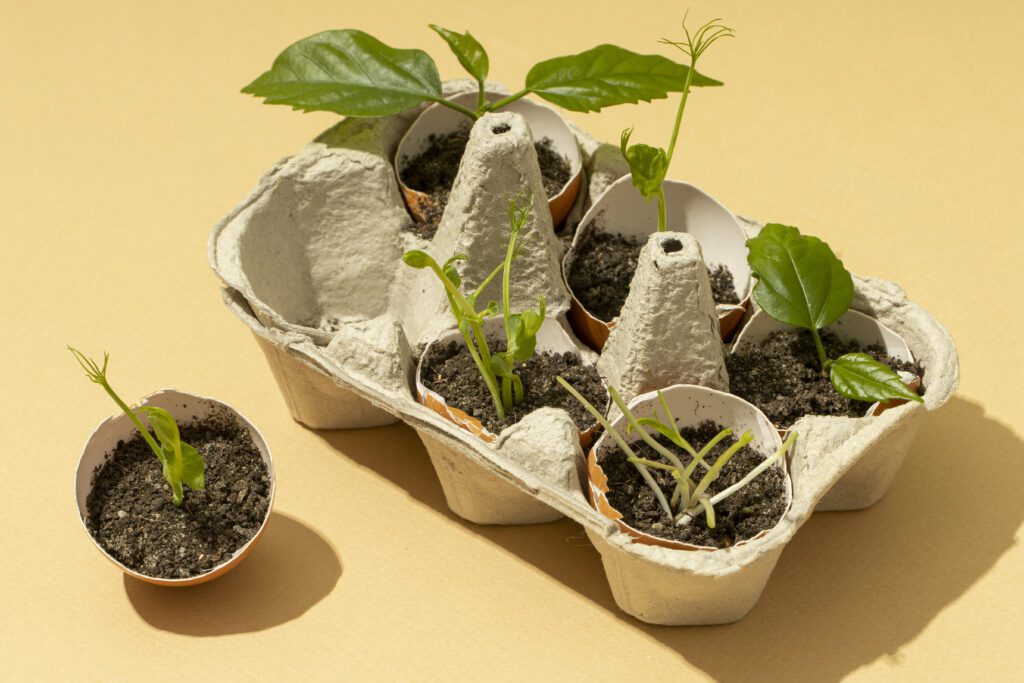
By using net pots, gardeners can reduce their reliance on soil, which can often be depleted of nutrients and prone to erosion. Instead, hydroponic systems with net pots allow plants to grow in a soil-less medium, such as perlite or coco coir, which promotes efficient nutrient uptake and eliminates the risk of soil-borne diseases. This not only results in healthier, more robust plants but also reduces the need for harmful pesticides and fertilizers that can have detrimental effects on the environment. Additionally, net pots are reusable and durable, contributing to a more sustainable gardening approach by minimizing waste and reducing the need for constant replacement.
• Net pots are made from recycled materials such as plastic, making them an eco-friendly option.
• They provide optimal growing conditions for plants while minimizing environmental impact.
• Hydroponic systems with net pots reduce reliance on soil, which can be depleted of nutrients and prone to erosion.
• Growing plants in a soil-less medium promotes efficient nutrient uptake and eliminates the risk of soil-borne diseases.
• This leads to healthier plants and reduces the need for harmful pesticides and fertilizers.
• Net pots are reusable and durable, contributing to a more sustainable gardening approach by minimizing waste.
Net Pots: Offering Versatility in Plant Growth
Net pots are the perfect solution for gardeners seeking versatility in their plant growth. These specialized containers offer a wide range of benefits that cater to the needs of various plants and cultivation methods. One key advantage of net pots is their ability to accommodate different types of growing media, such as clay pebbles, coco coir, or rock wool. This versatility makes them suitable for a variety of hydroponic systems, including deep water culture, ebb and flow, and nutrient film technique. Additionally, net pots can be used in traditional soil-based gardening, allowing for seamless integration between different cultivation approaches. Their adaptability makes net pots an invaluable tool for gardeners looking to experiment with different growing techniques or transition to hydroponics gradually.
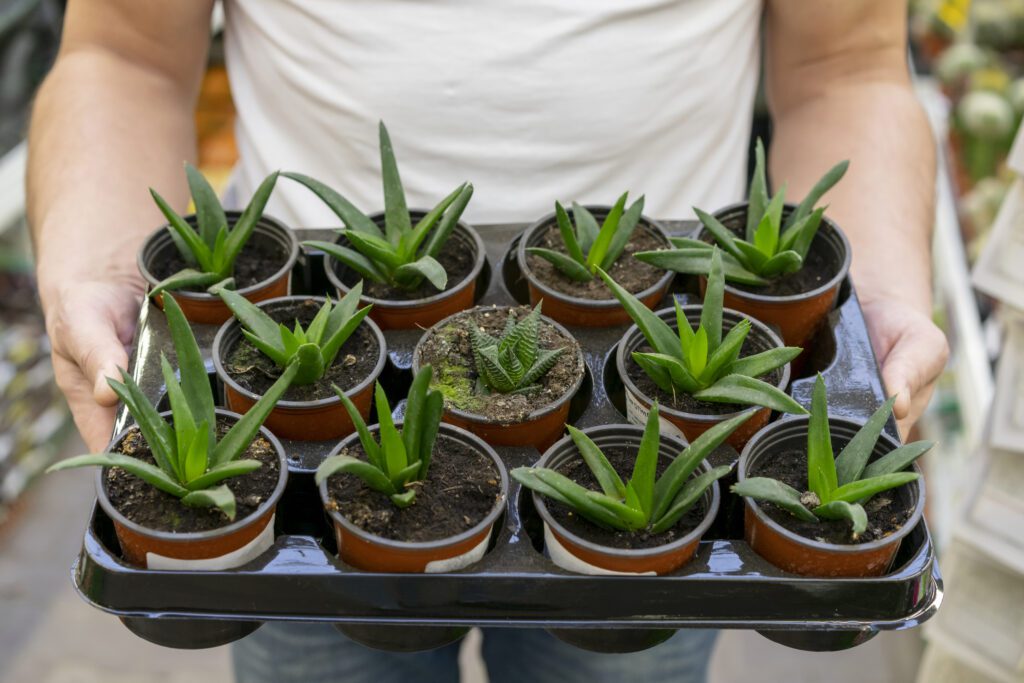
In addition to their compatibility with various growing media and systems, net pots also provide flexibility in terms of plant spacing and arrangement. With the ability to easily position and rearrange net pots, gardeners have greater control over the layout and density of their crop. This facilitates efficient space utilization, enabling more plants to be grown within a limited area. Moreover, the open design of net pots allows for air circulation around the root zone, preventing issues like mold or root rot in crowded environments. Whether you prefer a densely planted garden or prefer to space out your plants for better airflow, net pots offer the adaptability to meet your specific gardening goals.
• Net pots are compatible with various growing media, including clay pebbles, coco coir, and rock wool.
• They can be used in different hydroponic systems such as deep water culture, ebb and flow, and nutrient film technique.
• Net pots can also be incorporated into traditional soil-based gardening methods.
• Their versatility makes them ideal for gardeners looking to experiment with different cultivation techniques or transition to hydroponics gradually.
• Net pots allow for easy positioning and rearrangement of plants, giving gardeners greater control over the layout and density of their crop.
• This flexibility enables efficient space utilization and allows for more plants to be grown within a limited area.
• The open design of net pots promotes air circulation around the root zone, preventing issues like mold or root rot in crowded environments.
Net Pots: Facilitating Easy Transplantation
Net pots are an essential tool in hydroponic gardening, particularly when it comes to facilitating easy transplantation. These specialized pots are designed to provide optimal support for plant roots while also allowing for seamless movement from one system to another. With their open design and sturdy construction, net pots make transplanting a smooth and efficient process.
One of the main advantages of net pots for transplantation is their ability to promote root growth and prevent root damage. The open structure of these pots allows roots to grow freely and absorb nutrients from all angles, ensuring healthy development. Additionally, when it comes time to transplant, the plants can be easily removed from the net pots without causing harm to the delicate root systems. This ease of removal and transfer is particularly beneficial when moving plants from one hydroponic system to another or when transitioning from hydroponics to traditional soil gardening.
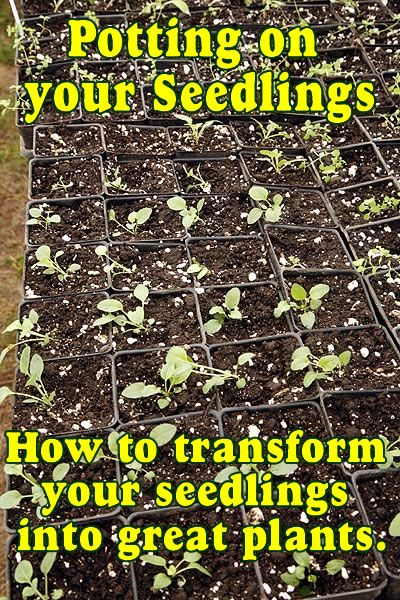
Net pots also offer the advantage of preserving the integrity of the root system during transplantation. Unlike traditional pots where roots can become tangled and disrupted during removal, net pots allow for the roots to remain entangled in the growing media. This minimizes stress on the plants and supports their overall health and vitality. Whether you’re a beginner gardener or an experienced hydroponics enthusiast, net pots are an excellent tool for ensuring the seamless and successful transplantation of your precious plants.
• Net pots provide optimal support for plant roots during transplantation.
• The open design of net pots promotes root growth and prevents damage.
• Plants can be easily removed from net pots without harming the root system.
• Net pots allow for seamless movement between hydroponic systems or soil gardening.
• Net pots preserve the integrity of the root system during transplantation.
• Using net pots minimizes stress on plants and supports their overall health.
Net Pots: Minimizing the Risk of Root Rot
Net pots are a crucial component in hydroponics systems, offering many benefits, including minimizing the risk of root rot. Root rot is a common problem in traditional soil-based gardening, where excessive moisture leads to the growth of harmful fungi and bacteria. However, net pots provide a solution to this issue by promoting excellent drainage and aeration.
The design of net pots allows water to flow freely through the container, preventing the roots from sitting in stagnant water. This constant flow ensures that the roots remain oxygenated, creating an environment that is unfavorable for the growth of root rot-causing pathogens. By minimizing the accumulation of excess moisture, net pots play a vital role in safeguarding the health of plant roots and reducing the risk of root rot in hydroponic systems.
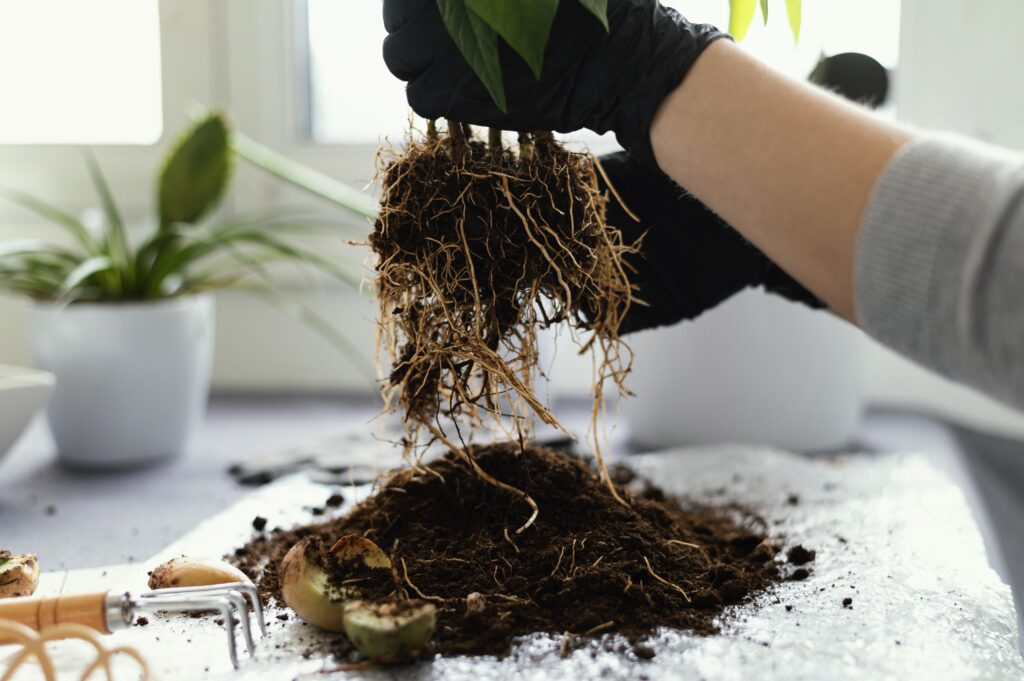
Furthermore, the unique structure of net pots allows for the efficient oxygenation of the root system. The open design of the pot’s sides enables oxygen to reach the roots from all directions, ensuring that they receive an adequate supply of this vital element. Research has shown that well-oxygenated roots exhibit increased nutrient uptake and stronger overall plant growth. By minimizing the risk of root rot and promoting maximum oxygenation, net pots contribute to the thriving and flourishing of plants in hydroponics setups.
• Net pots promote excellent drainage and aeration, minimizing the risk of root rot.
• The design of net pots allows water to flow freely through the container, preventing stagnant water that can lead to root rot.
• Constant water flow ensures oxygenation of the roots, creating an environment unfavorable for root rot-causing pathogens.
• Net pots play a vital role in safeguarding the health of plant roots and reducing the risk of root rot in hydroponic systems by minimizing excess moisture accumulation.
• The unique structure of net pots allows for efficient oxygenation of the root system.
• The open design of the net pot’s sides enables oxygen to reach roots from all directions, ensuring adequate supply for optimal growth.
• Well-oxygenated roots exhibit increased nutrient uptake and stronger overall plant growth.
• Net pots contribute to thriving and flourishing plants in hydroponics setups by minimizing the risk of root rot and promoting maximum oxygenation.
Net Pots: Allowing for Easy Monitoring of Plant Health
Net pots are an exceptional tool for gardeners who wish to easily monitor the health of their plants. The design of these pots allows for clear visibility of the roots, providing a convenient means of assessing plant vitality. By simply lifting the net pot, one can inspect the roots, looking for signs of nutrient deficiencies, disease, or other issues that may affect plant health. This easy monitoring process enables timely intervention, ensuring that any problems are addressed promptly, thus preventing potential damage or loss.
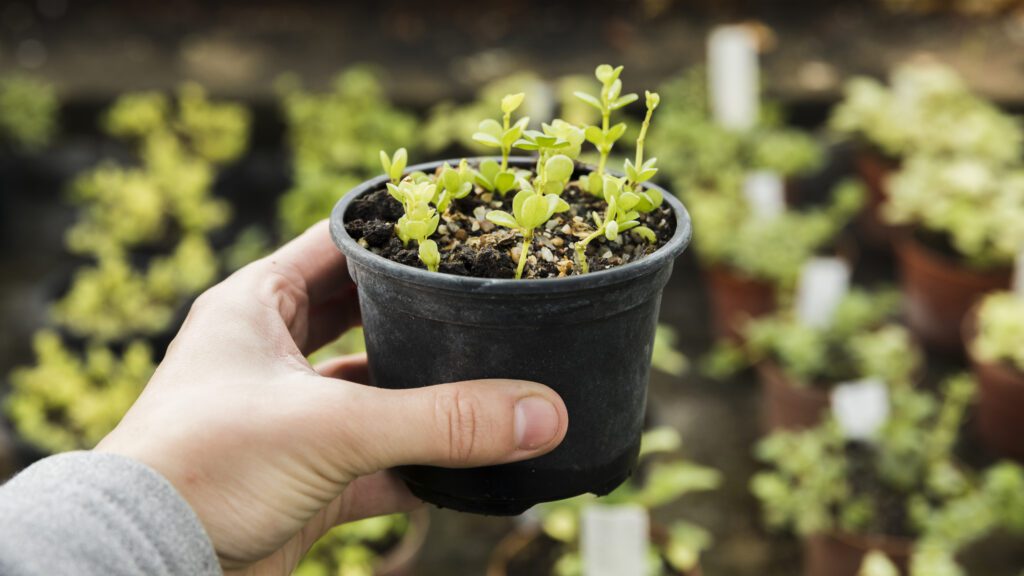
Furthermore, net pots facilitate the use of various monitoring devices and techniques. For instance, gardeners can easily insert probes or sensors into the potting medium to measure crucial parameters such as pH levels, moisture content, or nutrient concentration. This ability to gather real-time data enables precise adjustments and interventions, resulting in optimal growing conditions for the plants. Gardeners can also take advantage of specialized apps or digital monitoring systems that integrate seamlessly with net pots, providing detailed insights on plant health and growth patterns. With these advanced monitoring capabilities, gardeners can stay one step ahead in maintaining the well-being of their plants and maximizing their overall productivity.
• Net pots provide clear visibility of the roots, allowing for easy assessment of plant vitality
• Timely intervention can prevent potential damage or loss to plants
• Net pots facilitate the use of monitoring devices and techniques such as probes or sensors
• Real-time data gathered from net pots enables precise adjustments and interventions
• Specialized apps or digital monitoring systems can integrate seamlessly with net pots for detailed insights on plant health and growth patterns
Net Pots: Reducing the Likelihood of Overwatering
Overwatering is a common mistake that many gardeners make, and it can have detrimental effects on plant health. However, by using net pots in your hydroponic system, you can greatly reduce the likelihood of overwatering.
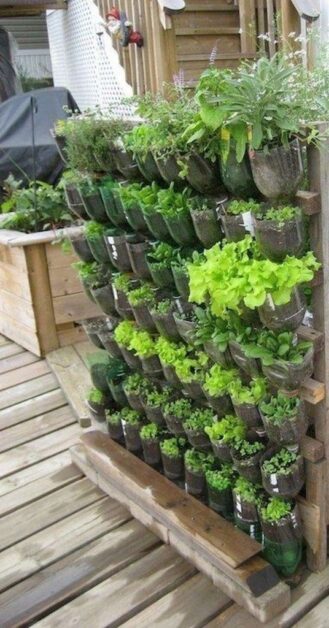
Net pots are designed with numerous small holes that allow excess water to drain freely, preventing water from pooling around the roots. This drainage feature is crucial as it helps maintain the ideal moisture level for the plants. When roots are constantly submerged in water, they can suffocate and become susceptible to root rot and other diseases. By utilizing net pots, you can ensure that your plants receive the necessary amount of water and oxygen, creating an optimal environment for their growth and reducing the risk of overwatering-related issues.
Additionally, net pots promote air circulation around the roots, further minimizing the chances of overwatering. The open spaces between the netting allow for proper aeration, preventing oxygen deprivation and providing the roots with access to fresh air. This not only aids in preventing overwatering but also enhances nutrient absorption and overall root health. With net pots, you can create a hydroponic system that effectively regulates water levels and oxygen availability, ensuring healthier plant growth and minimizing the risks associated with overwatering.
• Net pots have small holes that allow excess water to drain freely, preventing water from pooling around the roots.
• This drainage feature helps maintain the ideal moisture level for plants and reduces the risk of suffocation and root rot.
• Net pots promote air circulation around the roots, preventing oxygen deprivation and enhancing nutrient absorption.
• By using net pots, you can create a hydroponic system that effectively regulates water levels and oxygen availability.
Net Pots: Aiding in the Prevention of Soil-Borne Diseases
Soil-borne diseases can wreak havoc on a garden, causing plants to wither and die. Luckily, net pots offer a valuable solution in preventing these diseases from taking hold. The unique design of net pots allows for excellent drainage, reducing the likelihood of excess moisture in the soil. This is crucial because many soil-borne diseases thrive in damp conditions, such as pythium, fusarium, and phytophthora. By utilizing net pots, gardeners can create an environment that is unfavorable for these pathogens, effectively reducing the risk of soil-borne diseases.
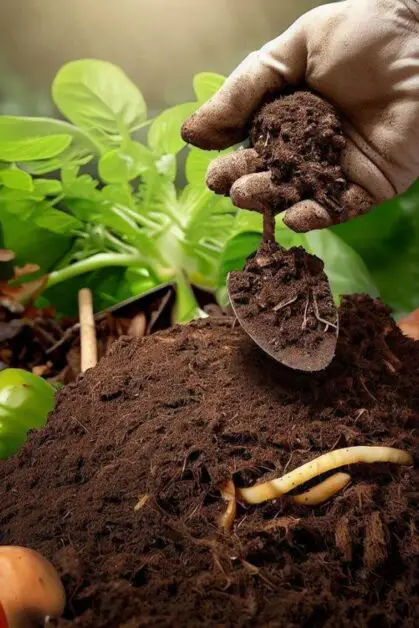
Additionally, net pots promote proper airflow to the roots of plants, further inhibiting the development of soil-borne diseases. The open design of net pots allows air to circulate freely, preventing the accumulation of moisture and reducing the likelihood of stagnant air pockets where diseases can thrive. As a result, plants grown in net pots are better equipped to resist infections caused by soil-borne pathogens. This preventive measure not only safeguards the health of individual plants but also contributes to the overall well-being of the garden, allowing for a thriving and disease-resistant crop.
• Net pots offer excellent drainage, reducing excess moisture in the soil
• Excess moisture is favorable for soil-borne diseases like pythium, fusarium, and phytophthora
• Utilizing net pots creates an unfavorable environment for these pathogens
• Proper airflow to plant roots is promoted by net pots
• Open design allows air to circulate freely, preventing stagnant air pockets where diseases can thrive
• Plants grown in net pots are better equipped to resist infections caused by soil-borne pathogens
• Net pots contribute to the overall well-being of the garden and allow for a thriving and disease-resistant crop.
Net Pots: Supporting Maximum Aeration for Roots
Net pots are an essential tool in hydroponics that aims to support maximum aeration for the roots of plants. Adequate oxygen supply to the roots is crucial for proper growth and development, as it facilitates nutrient uptake and water absorption. The design of net pots, with their open mesh sides and bottom, allows for the free exchange of air between the growing medium and the surrounding environment.
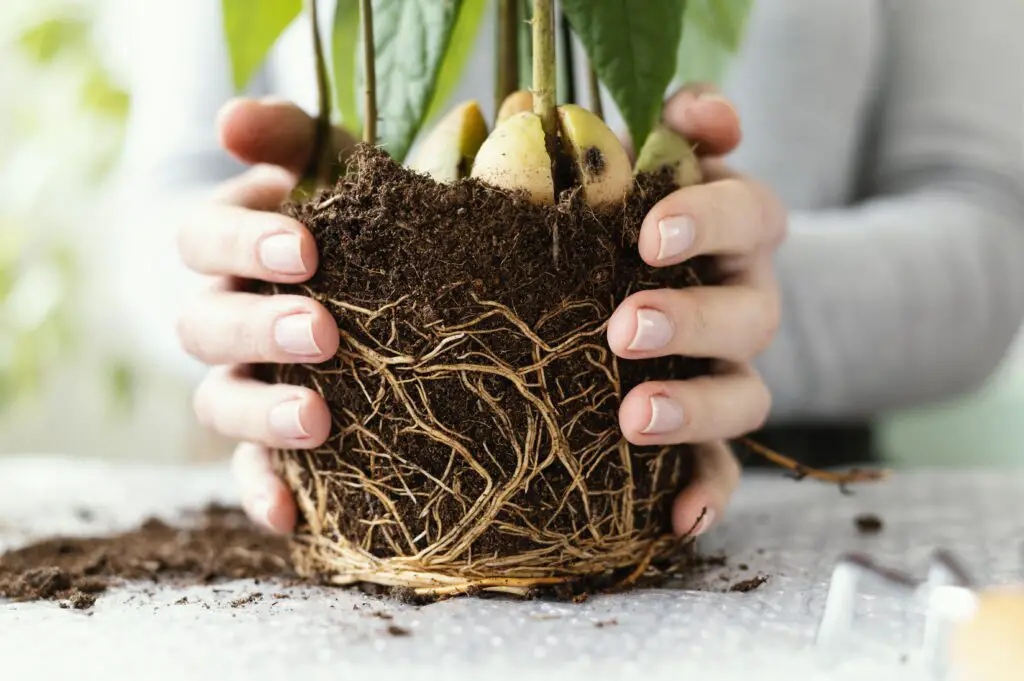
By using net pots in hydroponic systems, gardeners can ensure that the roots receive the necessary oxygen they need to thrive. The open structure of these pots promotes the natural process of oxygen diffusion, enabling roots to easily access atmospheric oxygen. This enhanced aeration not only leads to stronger and healthier root systems but also prevents the buildup of excess moisture and the development of anaerobic conditions that can lead to root suffocation and diseases. With the support of net pots, gardeners can create an optimal growing environment for their plants, maximizing their potential for robust growth and overall productivity.
• Net pots are designed with open mesh sides and bottoms to allow for the free exchange of air.
• The open structure of net pots promotes oxygen diffusion, ensuring roots have access to atmospheric oxygen.
• Adequate oxygen supply to the roots facilitates nutrient uptake and water absorption.
• Enhanced aeration from net pots prevents excess moisture buildup and anaerobic conditions that can suffocate roots.
• Using net pots in hydroponic systems creates an optimal growing environment for plants.
Net Pots: Ensuring Consistent Nutrient Distribution
In hydroponic systems, one of the key factors that contribute to successful plant growth is consistent nutrient distribution. Net pots, with their unique design, play a crucial role in ensuring that essential nutrients reach the roots uniformly. By allowing the nutrient solution to flow freely around the roots, net pots facilitate a constant supply of nutrients to the plants.

The design of net pots includes multiple slits or holes that allow the roots to extend through them. This not only provides a stable and secure support for the plants but also allows the nutrient solution to permeate evenly through the root zone. As a result, each plant receives an equal share of nutrients, preventing any deficiencies or nutrient imbalances that could hinder their growth. This consistent nutrient distribution promotes healthy root development and enhances the overall vigor and vitality of the plants.
• Net pots have a unique design that ensures consistent nutrient distribution in hydroponic systems.
• The multiple slits or holes in net pots allow the roots to extend through them, providing stability and support for the plants.
• These slits or holes also allow the nutrient solution to permeate evenly through the root zone, ensuring each plant receives an equal share of nutrients.
• Consistent nutrient distribution prevents deficiencies or imbalances that could hinder plant growth.
• Healthy root development is promoted by this uniform nutrient supply, resulting in enhanced vigor and vitality of the plants.
Net Pots: Promoting Stronger and Healthier Plant Growth
Net pots are an essential tool in promoting stronger and healthier plant growth in hydroponic systems. The unique design of net pots allows for optimal root development and nutrient absorption, leading to robust and thriving plants. By providing ample aeration to the roots, net pots facilitate the exchange of oxygen and carbon dioxide, ensuring that plants receive the necessary oxygen for cellular respiration. This increased oxygen availability stimulates root growth and enhances nutrient uptake, resulting in stronger and more vigorous plants.
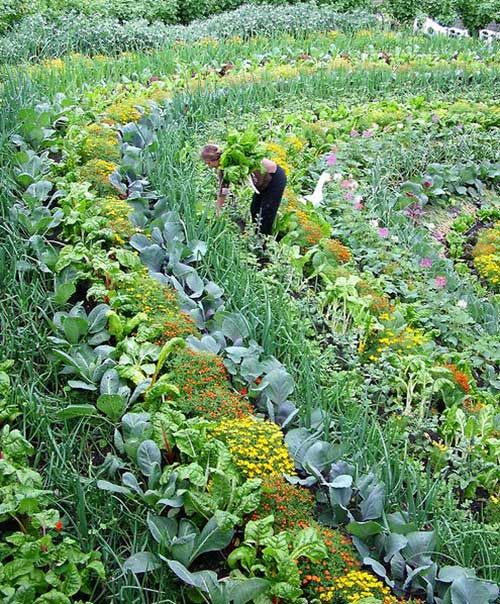
Furthermore, net pots promote healthier plant growth by allowing excess water to efficiently drain away. Proper drainage is crucial in preventing waterlogged roots, which can lead to oxygen deprivation and root rot. The porous nature of net pots allows excess moisture to escape, reducing the risk of overwatering and ensuring a well-balanced root environment. By maintaining ideal moisture levels, net pots help prevent the development of soil-borne diseases and other root-related issues. With net pots, gardeners can be confident in their ability to provide optimal growing conditions for their plants, resulting in healthier and more resilient crops.
• Net pots allow for optimal root development and nutrient absorption
• They facilitate the exchange of oxygen and carbon dioxide, promoting cellular respiration
• Increased oxygen availability stimulates root growth and enhances nutrient uptake
• Net pots promote healthier plant growth by allowing excess water to efficiently drain away
• Proper drainage prevents waterlogged roots, oxygen deprivation, and root rot
• The porous nature of net pots allows excess moisture to escape, reducing the risk of overwatering
• Maintaining ideal moisture levels helps prevent soil-borne diseases and other root-related issues
Net Pots: Offering Long-Term Durability and Reusability
Net pots are an essential component of any hydroponic setup, offering unparalleled durability and reusability. Unlike traditional clay or plastic containers, net pots are specially designed with numerous small holes that allow for maximum drainage and aeration. This unique feature not only promotes healthier root growth but also prevents the risk of waterlogging, which can lead to root rot and other plant diseases.
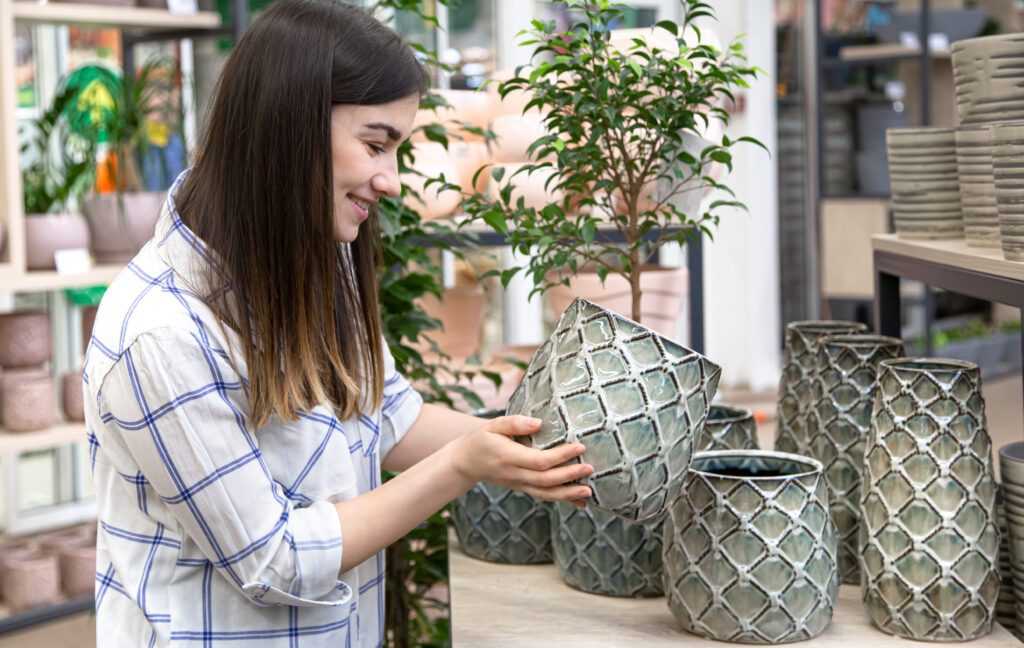
The long-term durability of net pots is a significant advantage for gardening enthusiasts. Made from robust materials such as recycled plastics or sturdy mesh, these pots can withstand the rigors of hydroponic cultivation for extended periods without losing their structural integrity. This means that they can be reused multiple times, making them a cost-effective and sustainable choice for growers. Additionally, net pots are easy to clean and sterilize, further enhancing their longevity and ensuring optimal plant health. Whether you are growing herbs, vegetables, or flowers, investing in net pots guarantees a lasting solution that maximizes your hydroponic gardening success.
• Net pots are specially designed with small holes for maximum drainage and aeration.
• This promotes healthier root growth and prevents waterlogging and root rot.
• Net pots are made from robust materials like recycled plastics or sturdy mesh.
• They can withstand the rigors of hydroponic cultivation without losing their structural integrity.
• Net pots can be reused multiple times, making them cost-effective and sustainable.
• They are easy to clean and sterilize, ensuring optimal plant health.
• Investing in net pots guarantees long-term durability and maximizes hydroponic gardening success.
Net Pots: Increasing the Efficiency
Net pots have revolutionized the efficiency of hydroponic systems, allowing for optimal nutrient absorption and root health. These specialized containers are specifically designed with numerous holes or slits, providing plants with maximum exposure to oxygen. By ensuring proper aeration to the roots, net pots promote faster and healthier growth, ultimately leading to increased overall efficiency in hydroponic cultivation.
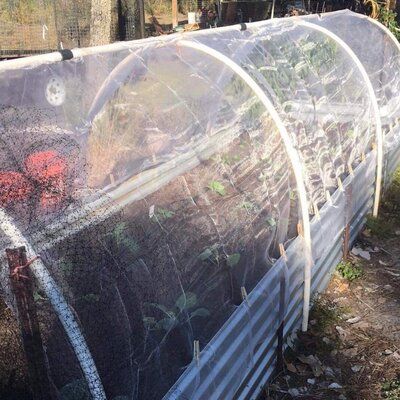
In addition to their superior oxygenation capabilities, net pots also play a crucial role in enhancing nutrient distribution. The strategic placement of the holes or slits in these containers allows for nutrient-rich solutions to easily reach the roots, ensuring a consistent and even supply of essential elements. This targeted delivery system reduces the risk of nutrient deficiencies, as plants can access the necessary nutrients when they need them most. As a result, plants grown in net pots demonstrate improved vigor, increased yield, and enhanced overall efficiency in nutrient uptake.
• Net pots provide optimal nutrient absorption and root health
• Specialized containers with numerous holes or slits for maximum exposure to oxygen
• Proper aeration promotes faster and healthier growth in hydroponic cultivation
• Enhanced nutrient distribution through strategic placement of holes or slits
• Consistent and even supply of essential elements reduces the risk of nutrient deficiencies
• Improved vigor, increased yield, and enhanced overall efficiency in nutrient uptake.
What materials are net pots typically made from?
Net pots are commonly made from plastic materials such as polypropylene or recycled polyethylene.
Can net pots be used in any type of hydroponic system?
Yes, net pots can be used in various hydroponic systems such as deep water culture, nutrient film technique, and ebb and flow systems.
How often should net pots be cleaned and sanitized?
It is recommended to clean and sanitize net pots between each planting cycle to prevent the buildup of harmful bacteria and pathogens.
Are net pots suitable for growing larger plants or only small ones?
Net pots are suitable for growing both small and larger plants, as long as the size of the pot is appropriate for the plant’s root system.
Can net pots be used in outdoor gardening as well?
Yes, net pots can be used in outdoor gardening, especially in areas with poor soil quality or limited space.
Are net pots compatible with all types of growing mediums?
Yes, net pots can be used with a variety of growing mediums such as clay pellets, coco coir, perlite, and vermiculite.
Do net pots require any special maintenance?
Net pots require regular inspection and cleaning to remove any debris or roots that may accumulate over time.
Can net pots be reused multiple times?
Yes, net pots are durable and can be reused multiple times if properly cleaned and sanitized between uses.
How do net pots compare to traditional plant pots in terms of water drainage?
Net pots offer superior water drainage compared to traditional plant pots, ensuring that the roots receive adequate oxygen and preventing waterlogging.
Do net pots promote faster plant growth compared to regular pots?
Net pots provide increased oxygenation, drainage, and nutrient absorption, which can contribute to faster and healthier plant growth compared to regular pots.
Can net pots be used for starting seeds before transplanting?
Yes, net pots can be used for starting seeds before transplanting them into larger containers or directly into the hydroponic system.
Are net pots suitable for growing delicate or sensitive plants?
Yes, net pots can be used for growing delicate or sensitive plants, as they offer better aeration and drainage, minimizing the risk of root rot or overwatering.
What are the environmental benefits of using net pots?
Net pots are considered a sustainable and eco-friendly option as they can be reused, reducing waste, and are often made from recycled materials.
Can net pots be used in both indoor and outdoor hydroponic setups?
Yes, net pots can be used in both indoor and outdoor hydroponic setups, providing optimal root oxygenation and drainage in any environment.
How do net pots aid in the prevention of soil-borne diseases?
Net pots eliminate the use of soil, reducing the likelihood of soil-borne diseases that can affect plant health and productivity.

Kanike Sreekanth, a prolific writer at SouthElMonteHydroponics, brings a unique blend of creativity and scientific rigor to the table. With a degree in Horticulture from a prestigious institution, Kanike’s expertise spans hydroponic farming, plant biology, and agricultural sustainability. Their passion for exploring innovative cultivation methods and promoting environmental stewardship drives them to uncover new insights in the realm of hydroponics. Kanike’s writing serves as a conduit for sharing their knowledge and inspiring others to embrace alternative farming practices for a more sustainable future.

